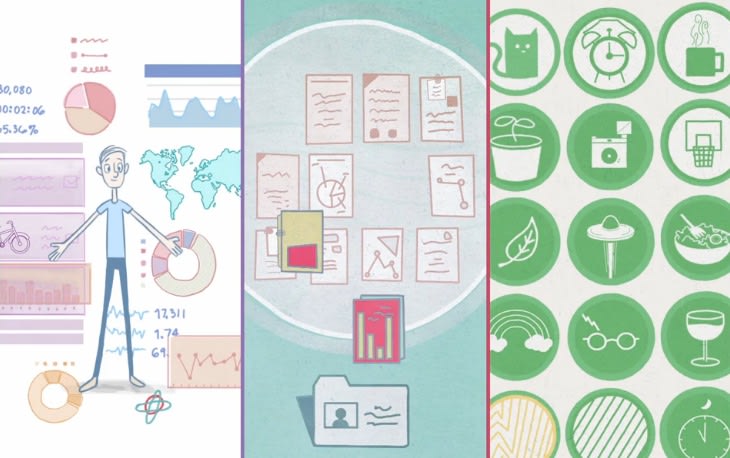- 英國有些大學從植物中去找新的抗生素
- IN THE LAB
- December 16, 2013, 7:06 p.m. ET
Antibiotics of the Future
Scientists hunt for new antibiotics amid a rise in resistant germs
As bacteria continue to develop resistance to
existing antibiotics, scientists are working on new strategies to
combat bug-borne infections and diseases, Shirley Wang reports. Photo:
AP.
Scientists are working to develop new strategies to combat the growing threat of germs that current antibiotics can't fight.
Some researchers are testing new substances, such as silver, to
combine with antibiotics to boost their killing power. Other researchers
are making use of genetic sequencing of bacteria to help develop killer
drugs at a faster pace than medical science was capable of in the past.
Another strategy aims to render harmful bacteria incapable of
infecting people, rather than killing the germs outright. One such
technique would neutralize disease-causing toxins by disrupting the
bacteria's internal mechanisms.
Antibiotic resistance is a growing threat to public health, medical officials say. Common germs such as
Escherichia coli, or E. coli, which can cause urinary tract and other infections, and
Neisseria gonorrhoeae,
which causes gonorrhea, are becoming harder to treat because they
increasingly don't respond to antibiotics. Some two million people in
the U.S. are infected each year by antibiotic-resistant bacteria and
23,000 die as a result, according to the Centers for Disease Control and
Prevention. The CDC says it doesn't have historical numbers.
One of the biggest threats is from
Enterobacteriaceae,
a family of germs that naturally lives in the gut and includes E. coli,
the CDC says. There are about 9,000 cases a year of infections from the
germs that can't be treated with usual antibiotics, resulting in 610
deaths. In 1998, there was just one case. Patients who don't respond to
normal antibiotics are given older drugs that had been discontinued
because of severe side effects, such as kidney damage, the CDC says.
Scientists say that
Enterobacteriaceae are particularly hard
to kill because of an outer cell wall that prevents many antibiotics
from penetrating. James J. Collins, a professor of biomedical
engineering at Boston University and Harvard University, and his
colleagues recently discovered that adding trace amounts of silver—long
known to have antimicrobial properties—allows the common antibiotic
vancomycin to work against E. coli, whereas the antibiotic isn't
effective against the microbe on its own. The silver appears to make the
outer walls of the bacteria more permeable, allowing the antibiotic to
get in and do its job, says Dr. Collins, who published the findings in
the journal Science Translational Medicine in June.
Some pharmaceutical companies are experimenting with other types of
additives with the aim of short-circuiting bacteria's defenses.
Researchers at Merck & Co., in
Whitehouse Station, N.J., are targeting an enzyme called beta-lactamase
that lives in certain bacteria and neutralizes antibiotics sent to
destroy them. By adding an enzyme-inhibiting agent called MK-7655 to the
antibiotic imipenem, researchers managed to kill about 97% of a type of
antibiotic-resistant bacteria that causes urinary-tract infections and
pneumonia, according to Nicholas Kartsonis, head of clinical development
of antibacterial, antifungals and non-hepatology viruses at Merck
Research Labs.
Synthetic Biologics Inc. is taking advantage of beta-lactamase's
ability to neutralize antibiotics by adding a modified version of the
enzyme to the drugs. The aim is to prompt the antibiotic to break down
when it reaches the bowel, where side effects and drug resistance for
bacteria called Clostridium difficile, or C. difficile, develops, but to
leave the antibiotic intact in the bloodstream. The process should
allow larger doses of antibiotics to be administered without the patient
suffering typical side effects such as gastrointestinal problems, says
John Monahan, who heads research and development for the Rockville,
Md.-based company.
C. difficile, which causes life-threatening diarrhea and is blamed
for 14,000 deaths a year, can spread rapidly in hospital patients on
antibiotics. Although there are drugs to treat C. difficile, the
bacteria are resistant to many antibiotics used to treat other types of
infections.
Antibiotics naturally lose their effectiveness over
time as bacteria populations build up resistance, and new drugs need to
be continually developed to take their place. But antibiotic
development by pharmaceutical companies slowed sharply after about 1990,
in part because they are less profitable than other drugs used to treat
chronic diseases. Compounding the problem has been an overuse of
antibiotics in people and farm animals, which has accelerated the
creation of antibiotic-resistant germs.
"Antibiotics have a finite lifetime because resistance is
inevitable," says Michael Fischbach, a bioengineering and therapeutic
sciences professor at the University of California, San Francisco.
"Therefore, there's always a need to innovate."
Bacteria have ways of defending themselves against other bacteria,
and most antibiotics are derived from the toxins they use. Identifying
and developing new antibiotics is a long and slow process. Now,
scientists are able to more efficiently scrutinize microbes for
undiscovered antibiotics by sequencing their genomes and then using
computer analysis to look for gene patterns that suggest a new
antibiotic recipe. Typically, antibiotics are encoded by anywhere from
10 to 40 genes.
Sean Brady, head of the Laboratory of Genetically
Encoded Small Molecules at Rockefeller University in New York, and his
colleagues recently zeroed in on half a dozen gene sequences. The team
found that the genes were encoded for toxins that appeared in lab
testing to be active against pathogens resistant to the antibiotic
vancomycin, which is commonly used to treat infections in the gut. The
research was published in the Proceedings of the National Academy of
Science in June.
2 million
The number of U.S. patients per year whose infections aren't treatable with the existing array of antibiotics
Whether the antibiotic will be useful in
treating people remains to be seen, says Dr. Brady. The main problem
with identifying new antibiotics isn't that they don't work, but that
they cause severe side effects or toxicity, drug makers say.
Another group of researchers, headed by Dr. Fischbach at the
University of California, has found a handful of new antibiotics that
kill methicillin-resistant
Staphylococcus aureus, or MRSA, by
sequencing genomes of bacteria found in the environment. MRSA can cause a
range of illnesses from skin infections to pneumonia and bloodstream
infections.
An unusual strategy doesn't aim to kill bacteria at all, but rather
to make them less harmful. Since bacteria only cause infections when
their population has reached a certain threshold, called a quorum,
researchers are looking for ways to disrupt the chemical signals the
bugs use to communicate with each other. Another approach aims to
neutralize toxins or disrupt other signaling molecules that are
necessary for bacteria to be infectious.
"We don't challenge them to a duel but basically confuse them into
not causing infection," says Gerry Wright, a professor of biochemistry
and biomedical sciences at McMaster University in Hamilton, Ontario.
Dr. Brady and his team at Rockefeller University demonstrated that
disrupting a cluster of genes reduced the virulence of a microbe that
causes infection affecting the lungs, bones and joints. The researchers
published the work late last year in the Journal of the American
Chemical Society.






























